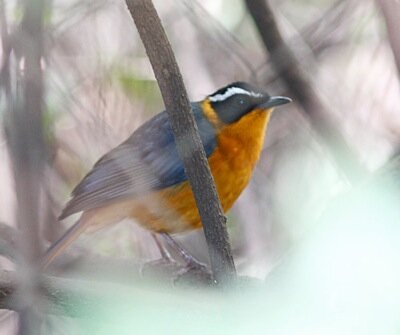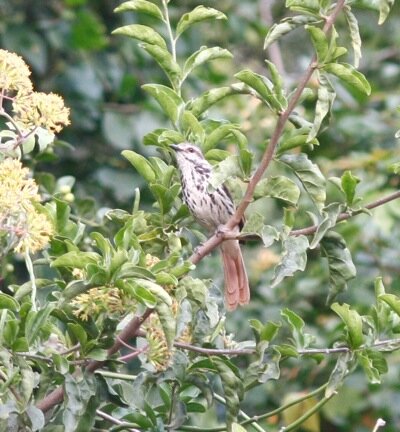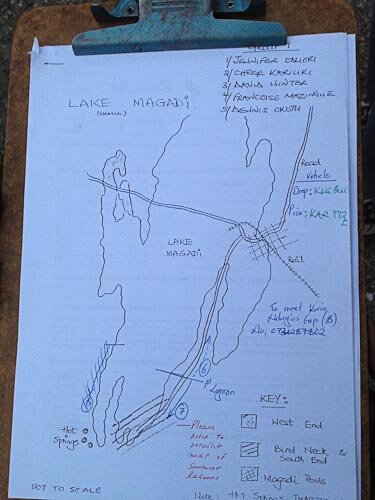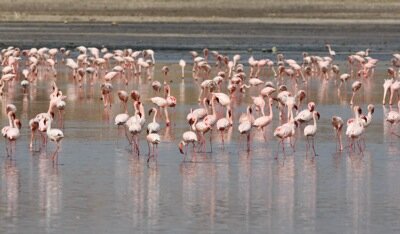Long business trips can be taxing, but when they include exotic birding locations like Kenya I look at them in a whole new light. A recent trip to Nairobi involved a weekend so I made sure that I put the time to good use and organized a birding trip on both the Saturday and Sunday. Despite this being my 5th trip to the capital, I’d never managed to visit Nairobi National Park so I really had to remedy that.
One thing you notice when flying over Nairobi is that apart from the city’s sprawling urban areas you spend a lot of time flying over expanses of golden grassland, large portions of which can be attributed to the Nairobi National Park. Boasting a bird list of well over 500 species (Brian Finch identified the park’s 529th species in 2010 – an African Stonechat), and given it’s proximity to Nairobi, I would say the park is well worth a visit for birders new to East Africa.
I looked at various travel options to get to the park, but in the end decided that hiring a taxi with a driver was the best value for money and it also allowed me go at my own pace as I generally try and photograph any birds I see, particularly new ones. Also, a real rookie error, I managed to leave my Birds of East Africa field guide back in South Africa so I needed as much photographic evidence as possible to identify some of the birds. In terms of costs, the taxi driver charged me KES 6500 ($70) for a full day of driving (7am-6pm) and the park entrance for both of us was about KES 5500 ($60), which I thought was pretty steep, but understand that most East African parks are expensive. My driver, Kiteme, was great and by the end of the day he was pretty sharp at picking up distant birds. Importantly, he was also very patient with me and had no problem maneuvering the car to help me photograph birds. What follows is a selection of photos from the day with a bit of commentary.
One of the first birds of the day was Grey-capped Warbler. I’ve seen this species before in Uganda, but never one quite as confiding as this individual. It was calling from some shrubbery bordering the parking lot of the main entrance to the park. Some gentle spishing and it just popped into view.
Our first stop for the morning was the Ivory Burning site where you can get out of your car and walk around. I was quite chuffed with myself when I recognized a calling barbet and managed to track down this Spot-flanked Barbet in a nearby tree.
A Tree Pipit kept me distracted for a good 10 minutes as it played hide and seek, but I finally managed to snap this shot.
The last time I saw Red-rumped Swallow was April 1999 in southern Spain and this was my first sighting in Africa, so I was quite excited when a small group of them perched and started calling at the Ivory Burning site. What I remember when first seeing Red-rumped Swallow in Spain was how similar they are to Greater-striped Swallow, not only in appearance, but they also have similar calls. Take a listen, I managed to record this short clip with my iPhone – sorry about the plane noise in the background, there’s an airport nearby and Saturday mornings seem to be a popular practice time.
I didn’t spot the first of three White-bellied Bustards we saw – I was busy watching a Rufous Sparrow when my driver, Kiteme, skillfully maneuvered the car to give me great views of this individual. White-bellied Bustards can be pretty shy birds in South Africa so I really enjoyed the experience.
Rufous Sparrow, what a smart bird, the male at least. It really reminded me of Cape Sparrow, a smart endemic from Southern Africa.
I really enjoyed the wheatears and chats in the park, particularly as they are vagrant visitors to Southern Africa and are yet to grace my list for the sub-region. Pied Wheatear was pretty common and the easiest to identify.
This Pied Wheatear appears to be of the ‘vittata’ race, an uncommon sighting according to the Birds of East Africa.
With no prior experience I found separating this Isabelline Wheatear from Northern Wheatear a tad tricky, but Brian Finch helped by confirming its identity.
Whinchat is another Southern African vagrant that I’ve yet to see in the region so I was tempted to sneak one into my luggage ![]()
This Rufous-naped Lark was particularly confiding, but what was most interesting about it was the call it was making. I’m used to the typical three-syllabled call of the southern African race, but take a listen to this short clip I managed to record with my iPhone.
Below is the balance of my photos from the day. If anyone is looking for a taxi driver that is prepared to take them to Nairobi National Park let me know and I’ll put you in touch with Kiteme.
David Winter
- Yellow Wagtail
- Striped Kingfisher
- White-bellied Tit
- Stout Cisticola
- Long-tailed Shrike
- Stout Cisticola
- Cinnamon-breasted Bunting
- Diederik Cuckoo
- Lesser Kestrel
- Grassland Pipit
- Ostrich
- Temminck’s Courser
- Grassland Pipit
- Grassland Pipit
- African Silverbill
- Marabou Stork
- Stout Cisticola
- Black-winged Lapwing
- Grassland Pipit
- Isabelline Shrike
- White Rhino
























































Recent Comments